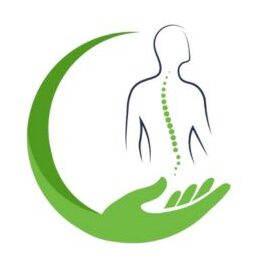Back pain is something that almost everyone has experienced at one point or another. Whether it’s from sitting too long, lifting something heavy, or just stress, it can really put a damper on daily activities. Luckily, there are various ways to manage back pain, and one option you might not have considered is craniosacral therapy.
So, what is craniosacral therapy? Unlike traditional treatments that might involve medication or intense physical therapy, craniosacral therapy offers a gentle, holistic approach. It’s non-invasive, meaning it doesn’t involve surgery or needles. This kind of therapy focuses on easing the stress and tension in the body that might be causing your pain. People often prefer it because it’s not just targeting the symptoms temporarily; it aims to address the root causes of discomfort and is suitable for a wide range of issues, not just back pain.
By gently manipulating the bones in the skull and spine, craniosacral therapy aims to alleviate stress and help restore the body’s natural alignment. Instead of just covering up the pain, this method may provide long-term relief. So, let’s dive deeper into how this works.
Understanding Craniosacral Therapy: A Holistic Approach
At its core, craniosacral therapy is about listening to the body. The underlying concept revolves around the body’s craniosacral system, which includes the membranes and fluids surrounding the brain and spinal cord. This system can affect the pressures and tensions in the central nervous system.
During a session, a practitioner uses their hands to evaluate this system by gently touching specific areas on the body, like the head and spine. The aim is to release tensions and allow the body’s own systems to correct and realign themselves, working toward natural balance and healing.
When you go for craniosacral therapy for the first time, here’s what you can expect: – Intake Discussion: The practitioner will chat with you about your health history and current symptoms. – Relaxed Setting: You’ll lie on a comfortable table, fully clothed. – Gentle Touch: The therapist uses light touch, often no more than the weight of a nickel. – Focused Time: Sessions typically last around an hour.
The gentle touch used in craniosacral therapy techniques may help ease restrictions that can contribute to problems like back pain. It’s not just about fixing what’s already wrong, but about keeping your body in tune and functioning optimally. By addressing the central nervous system, CST could also play a role in reducing systemic pain and encourage a sense of well-being.
Medical experts are still exploring craniosacral therapy‘s abilities to alleviate back pain, but many believe it’s grounded in science. Research suggests that releasing tension around the central nervous system can decrease pain and improve bodily functions. As more studies are conducted, the evidence for CST as a viable option for pain relief grows.
Real-Life Success Stories and Research Evidence
Hearing from people who’ve benefited from craniosacral therapy can be encouraging. Take Sonika Seth, for example. She battled persistent back pain for years, trying different treatments with little success. After a couple of CST sessions, she felt a significant reduction in her discomfort and an increase in mobility. Such personal stories add a real-life perspective to the clinical benefits.
Research is also shining a light on craniosacral therapy. Studies have looked into its effectiveness in reducing stress and alleviating pain. One key finding is its potential to improve quality of life for those dealing with chronic conditions. The positive impact on emotional well-being can’t be overstated. By reducing stress levels, CST could indirectly aid in emotional balance too, making it an appealing option for improving overall health.
Not only does craniosacral therapy help with easing back pain, but it’s also been beneficial for anxiety and even migraines. For instance, participants in several studies reported feeling calmer and more at peace, which might help those who seek these benefits.
Navigating Your Journey with Craniosacral Therapy
If you’re curious about trying craniosacral therapy, finding the right practitioner is key. Look for someone with proper craniosacral therapy training and certification. This ensures they have a solid understanding of craniosacral therapy techniques and can provide the best care.
Here’s a simple guide to get started: – Research Online: Look for reviews and practitioners in your area. – Check Credentials: Ensure they’re certified in CST. – Initial Consultation: Ask questions to understand their approach.
Consider craniosacral therapy if you’re not finding relief with traditional methods. It’s particularly suited for those open to alternative treatments or looking for a less intrusive option. Remember, it can be complementary to other treatments, so don’t hesitate to combine therapies for a more holistic plan.
Finally, talk to your healthcare provider before starting any new therapy. They can help ensure craniosacral therapy fits your overall treatment plan. By looking at the body’s needs holistically, it’s possible to find new paths to both relief and well-being. Exploring diverse options like craniosacral therapy adds a valuable dimension to managing health, presenting a gentle, reassuring way to alleviate pain and promote healing.



